Camellias are one of those fantastic plants that look beautiful whether they’re in bloom or not. The glossy, deep green, leathery leaves are as pretty as any ornamental grown for its foliage.
As beautiful as we find them, there are lots of insects out there that consider the leaves a nutritious and delicious meal.
When they find your plants, they’ll chew the leaves ragged if given the chance. And the larvae? They’re even worse, weakening the plant and leaving it vulnerable to diseases.
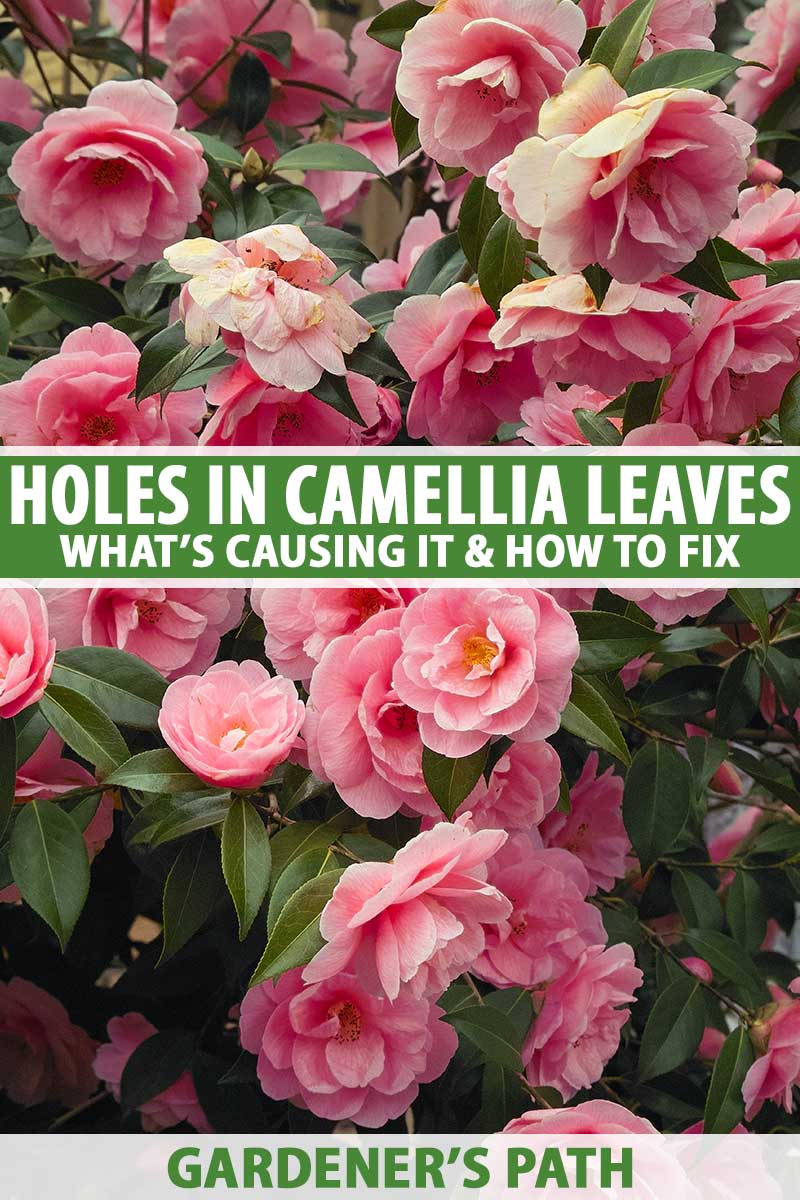
We link to vendors to help you find relevant products. If you buy from one of our links, we may earn a commission.
If you’ve noticed holes in your camellia leaves, it’s time to take action. The sooner you address the situation the better off you’ll be. It’s unlikely that one of the pests that eats camellia leaves will kill your plant, but never say never…
Even if an infestation doesn’t necessarily mean death, we want our camellias to look as pretty as possible, right? I mean, that’s why we keep them around.
This guide aims to help you figure out what’s chewing on your plants and how to give them the boot. Here’s what’s coming up:
7 Common Camellia Pests That Chew Holes in Leaves
It’s time to learn how to deal with these pesky pests to keep those camellias looking fabulous!
1. Black Vine Weevil
We’ll start with the most common leaf-chomping pest of camellias. These tend to cause the most damage as well.
Black vine weevil adults (Otiorhynchus sulcatus) feed at night on the leaves of your beautiful bushes, leaving notches on the margins.
Not content to just keep their damage to the foliage, however, the larvae of this pest will eat through the roots and basal crown.
It’s the larvae that can kill your plants, while the leaf damage is mostly cosmetic.
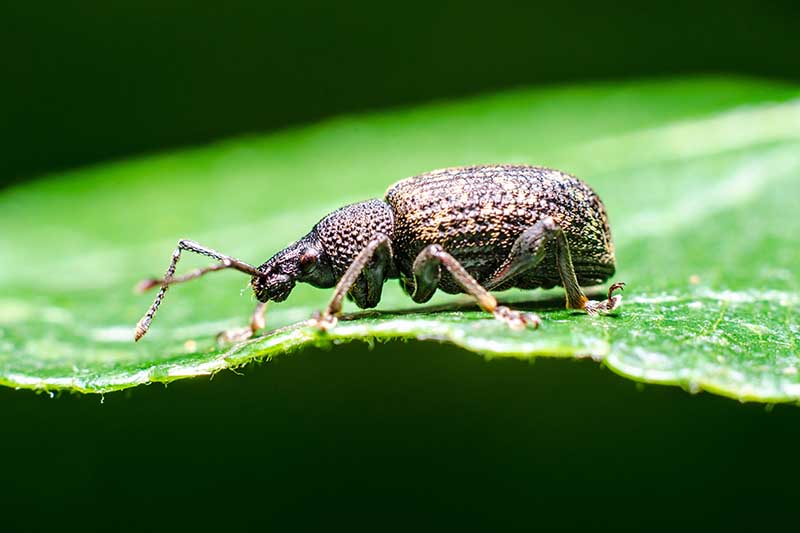
The adults are black snout beetles that are about half an inch long. They hide out during the day so they can be hard to see. If you suspect they’re feeding on your plants, go out at night with a flashlight and look for them.
While you can find these little jerks anywhere in North America, it’s in warmer regions where they do the worst damage because the larvae are never killed off by a harsh winter.
Sticky traps can capture the adults. You can wrap them around the trunk or place these on the ground and then shake the limbs of the shrub.
Grab a pack of 15 seven-by-36-inch wraps at Arbico Organics.
You can also wrap corrugated cardboard around the trunk. The beetles will hide in the cardboard and you can go out and remove it during the day, along with the beetles.
Dealing with the grubs requires a different approach. To kill them, you can use a product that contains the beneficial bacteria Bacillus thuringiensis subspecies kurstaki (Btk) strain SA-12, or parasitic (entomopathogenic) nematodes.
If you opt to use Btk, mix it according to the manufacturer’s directions and use it to drench the soil around the trunk inside the drip line once every two weeks.
Arbico Organics carries a liquid concentrate in pint, quart, and gallon sizes.
Triple Threat Beneficial Nematodes
To go the nematode route, pick up a Triple Threat pack from Arbico Organics, available in five, 10, 50, 250, or 500 million counts. Follow the manufacturer’s directions for applying to the soil.
2. Cambium Curculio
What is it with all these obnoxious beetles? Always laying eggs that hatch into larvae that want to devour our plants…
In this case, the adults of the cambium curculio (Conotrachelus anaglypticus), which are brown and yellow weevils with a shield-shaped body, dine on the foliage and then lay their eggs in the bark of trees and shrubs.
Once the eggs hatch, the larvae feed and tunnel around between the cambium and the inner bark. This feeding alone won’t kill your plant, but it does leave them exposed to disease.
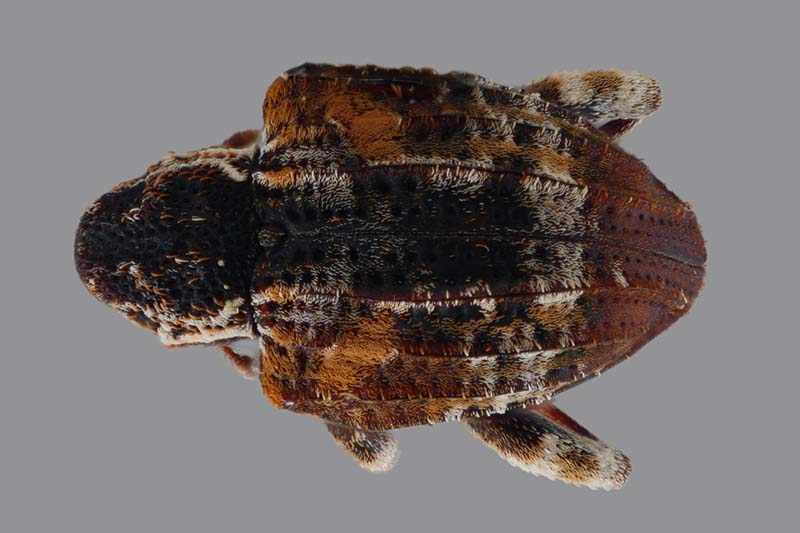
This pest is found in the eastern half of North America.
It’s difficult to treat these bugs because they hide out where pesticides can’t reach them, so you’ll need to target the adults. The best way to do this is with a two-step approach.
First, spray the tree with a product that contains the beneficial fungus Beauveria bassiana.
BotaniGard ES is a good option. It’s available in quart or gallon containers at Arbico Organics.
Alternate this every 10 days with a product that contains pyrethrin, such as PyGanic Gardening.
Pick up an eight-ounce, 32-ounce, or gallon container at Arbico Organics.
By the way, if you decide to try and kill the adults of any of the adult beetles listed in this guide, you can use this strategy as well.
3. Cranberry Rootworm Beetle
Yeah, cranberry is in the name, but these opportunists will chow down on many woody landscape species. The quarter-inch-long cranberry rootworm beetle (Rhabdopterus picipes) eats at night, chewing streak-like holes through the young foliage.

As with the black vine weevil, the larvae are the real problem.
They eat the roots of the plant and in large enough numbers they can harm your camellia, but this is rare. Populations will vary from year to year, and most of the time the damage is minimal and largely cosmetic.
These beetles are about a quarter of an inch long and metallic bronze-black. You can capture them the same way that you would black vine weevils, and control the grubs in the same way as well.
Don’t use insecticides to kill the beetles as you may also harm beneficial insects. The damage these pests do to camellias is not usually enough to warrant chemical treatment.
4. Fuller Rose Beetle
The Fuller rose beetle (Naupactus godmanni) loves roses, but it isn’t against a change of diet. It eats camellias, geraniums, azaleas, begonias, and lilies, as well as cane berries and stone fruits.
The adult beetles are light brown and about a third of an inch long. They can be found in over half of the states in the US, with a notable concentration in the East and Midwest.
The larvae overwinter in the soil but there can be multiple generations each year in areas that don’t experience heavy freezes.
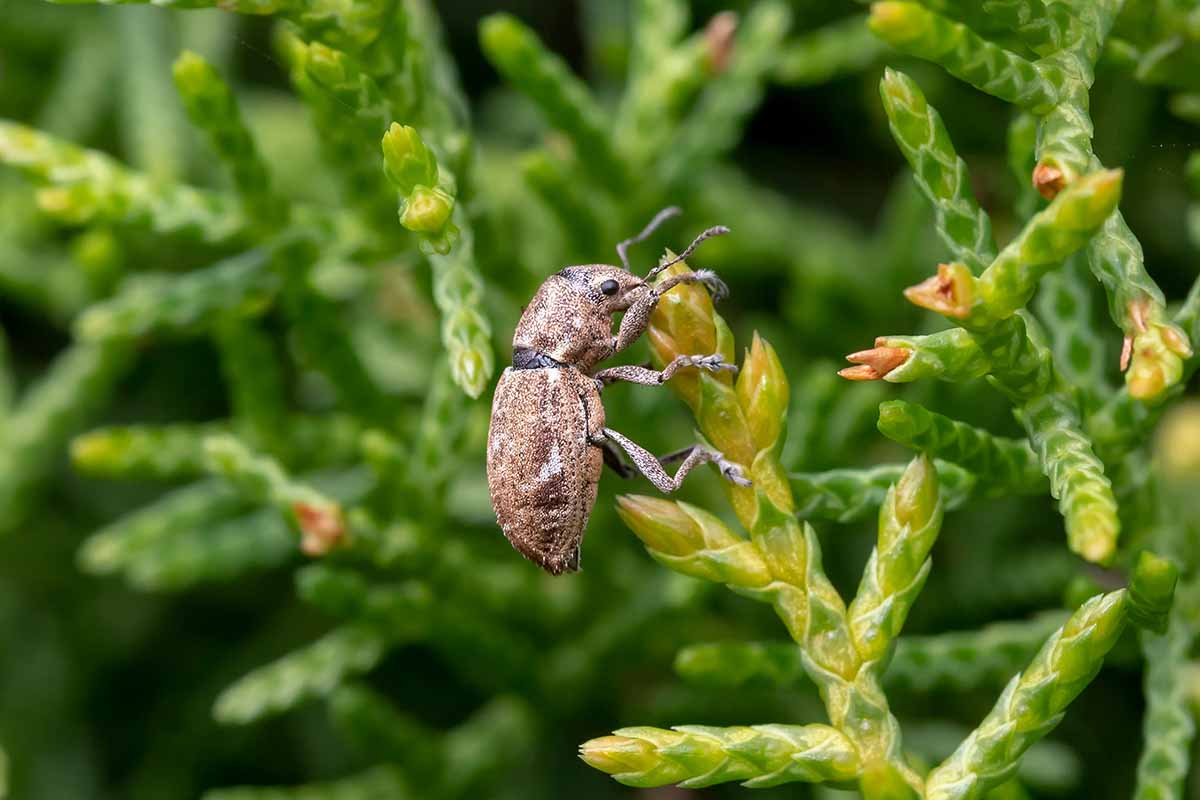
As with other beetles on this list, the adults feed on the leaves at night while the larvae munch on the roots.
The adults leave a serrated edge behind on the leaves while the larvae eat the fine root hairs underground, weakening the plant. Once the root system has been damaged, the plant will be more susceptible to drought and fungal infections.
The adults tend to hang out on the lower parts of the bush, so pruning away the lower branches can help. Then, place a sticky band around the trunk to catch any adults that try to travel up the trunk.
Parasitic wasps and assassin bugs attack egg masses and adults, so invite them into your space by buying a pack of 250, 500, 1,000, 2,000, or 5,000 eggs at Arbico Organics.
You can kill the larvae using Btk and the same species of beneficial nematodes as described above.
5. Grasshopper
Grasshoppers are the ultimate opportunists. They’ll eat a massive range of plant species, and they can completely devastate a garden when they arrive in swarms.
They aren’t quite as dangerous to camellia plants as the larvae of the beetles on this list, but they can leave behind ragged, hole-filled leaves.

Most of us have seen grasshoppers before, but if you aren’t familiar, these insects can be green, gold, tan, or brown.
They have folded back legs that allow them to hop great lengths. There are thousands of species and they hang out all summer, eating away.
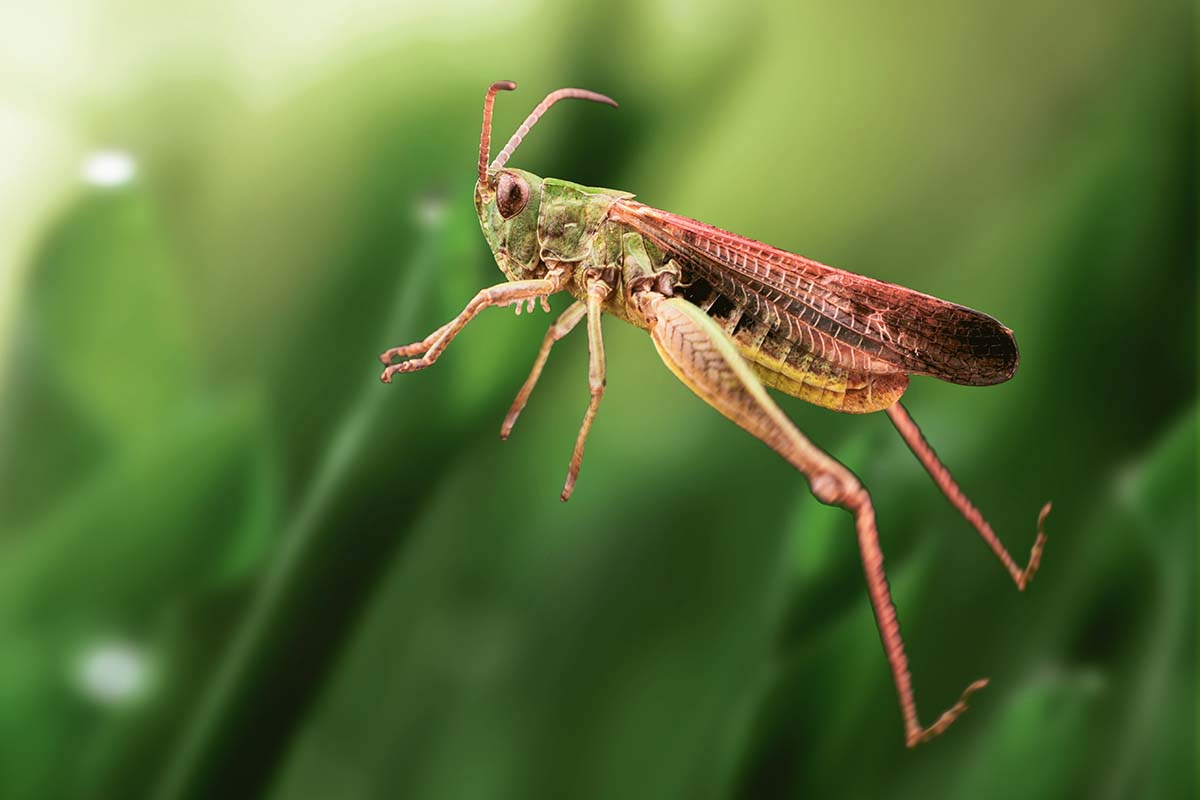
In a healthy garden, natural predators like bats, birds, owls, kestrels, lizards, toads, spiders, and snakes will devour grasshoppers. But in our modern cultivated spaces, an infestation can quickly get out of hand.
Nola Bait is an effective method of control that’s completely harmless to pets and people.
It’s a biopesticide made from wheat bran coated in the pathogen Nosema locustae. Just sprinkle the product around your garden, and when the grasshoppers eat it, they will become sick.
Arbico Organics carries Nolo Bait in one- or five-pound bags.
You can also use a garlic-based repellent.
You can make your own following the instructions in our guide or purchase a quart of Garlic Barrier at Arbico Organics.
Spray it on your plant once a week to deter grasshoppers. Be sure to reapply more often if it rains.
6. Leaf Beetle
Closely related to cranberry rootworm beetles, oval leaf beetles Rhabdopterus deceptor and R. praetextus are far less common. They, too, feed at night on the foliage of the plant and the elongated, crescent-shaped holes they chew are similar.
They grow to about a quarter-inch long and range between reddish-brown and black, with a metallic sheen. The larvae feed on the roots.
The only way to tell the difference between these species and their relative is to capture one and have it verified by an expert, but it doesn’t really matter which is attacking your plant. They’re all treated the same.
They live only in the eastern half of North America, and as with cranberry rootworm beetles, the damage they cause is mostly cosmetic. Treat as you would black vine weevils.
7. Strawberry Root Weevil
Strawberry root weevils (Brachyrhinus ovatus) are not only a pest of camellias – they’ll come into your house and make a nuisance of themselves as well.
Yes, they feed on strawberries, as well as cane berries and some ornamental shrubs. The adult is a roundish brownish-black beetle that can grow up to half an inch long.

The adults eat notches out of the foliage and the larvae eat the roots. The adults will make your camellias look ragged but the larvae do the real damage.
Once again, the same species of nematodes and Btk are the best methods of control for the larvae, and trapping the adults with sticky paper and/or cardboard as described above is effective for controlling the beetles.
If you act quickly as soon as you notice signs of feeding in the late spring or early summer, you can often head off the egg-laying phase so you won’t have to worry about larvae emerging.
Help Your Camellia Foliage Become Whole Again
Once you determine what has been nibbling on your shrubs, use the guidance above to get rid of the darn pests.
The individual leaves that they’ve eaten won’t fill in and look normal again, but eventually the plant will drop them and replace them with new leaves.
Before long, you’ll forget there ever was a point where your camellias looked anything but fabulous.
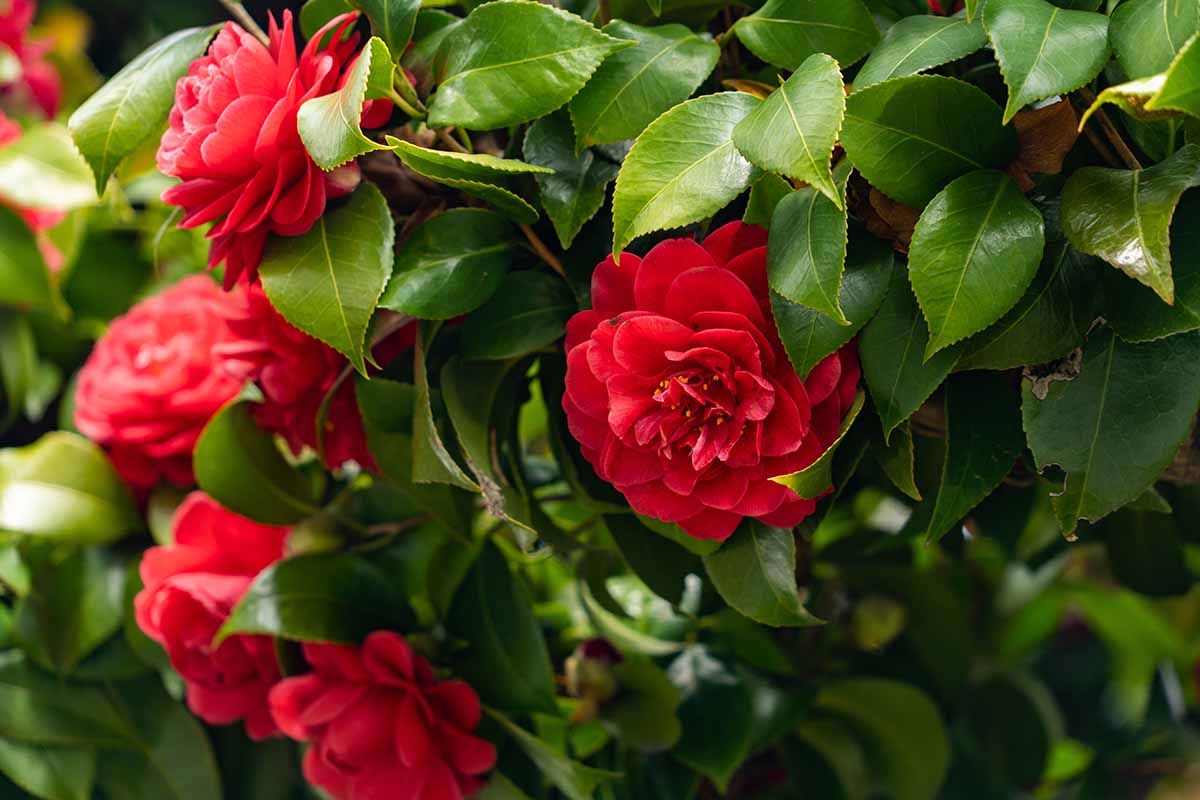
Don’t forget about us, though! We’d love it if you’d come back and share what tactics you used to fix the problem. Let us know in the comment section below.
I hope this guide helped you find the right solution. If you have more questions about growing gorgeous camellias, you might be interested in the following guides:
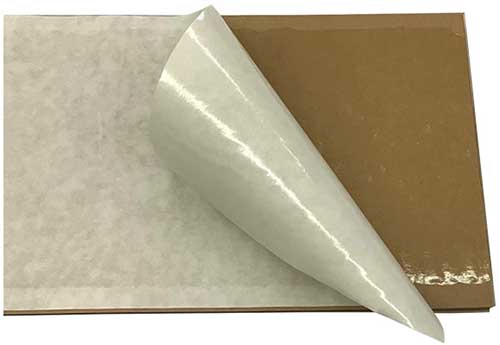
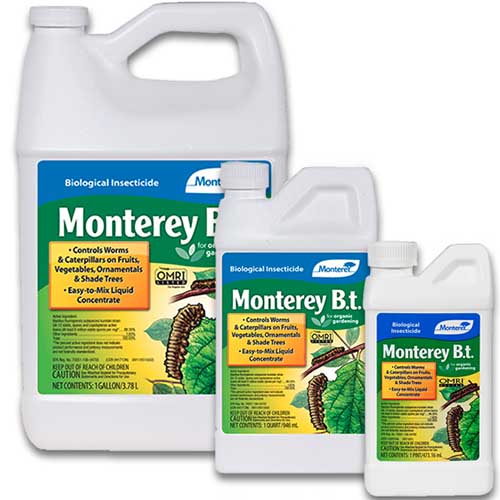
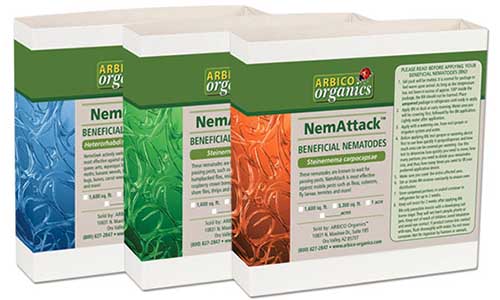
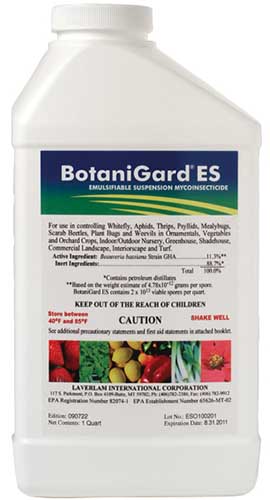
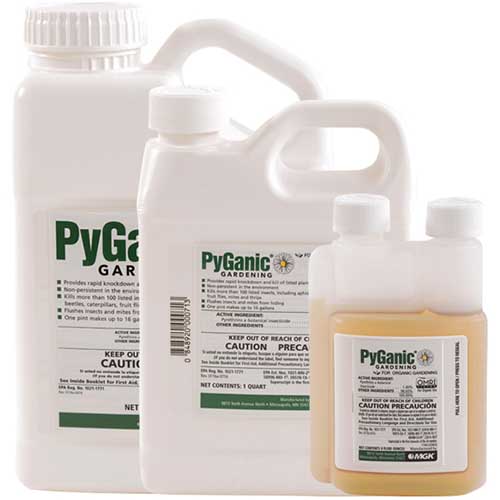
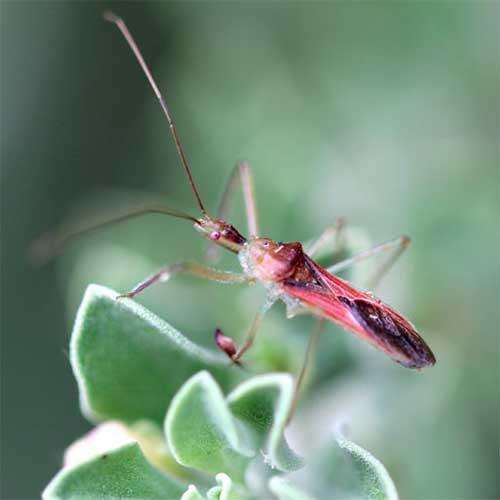
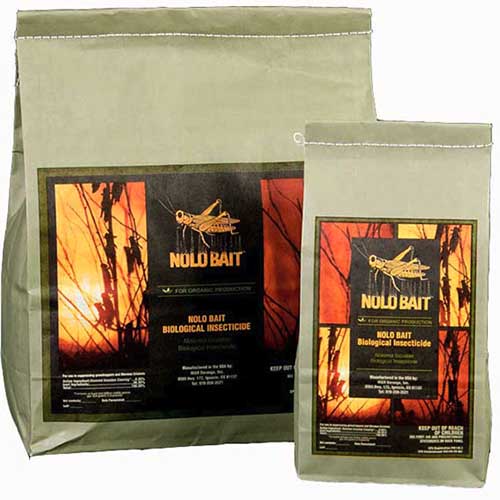


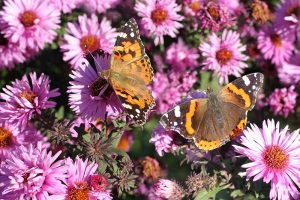
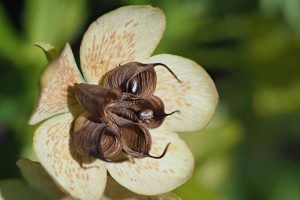
Great, very useful and thanks, John in England.
Thanks for reading, John!